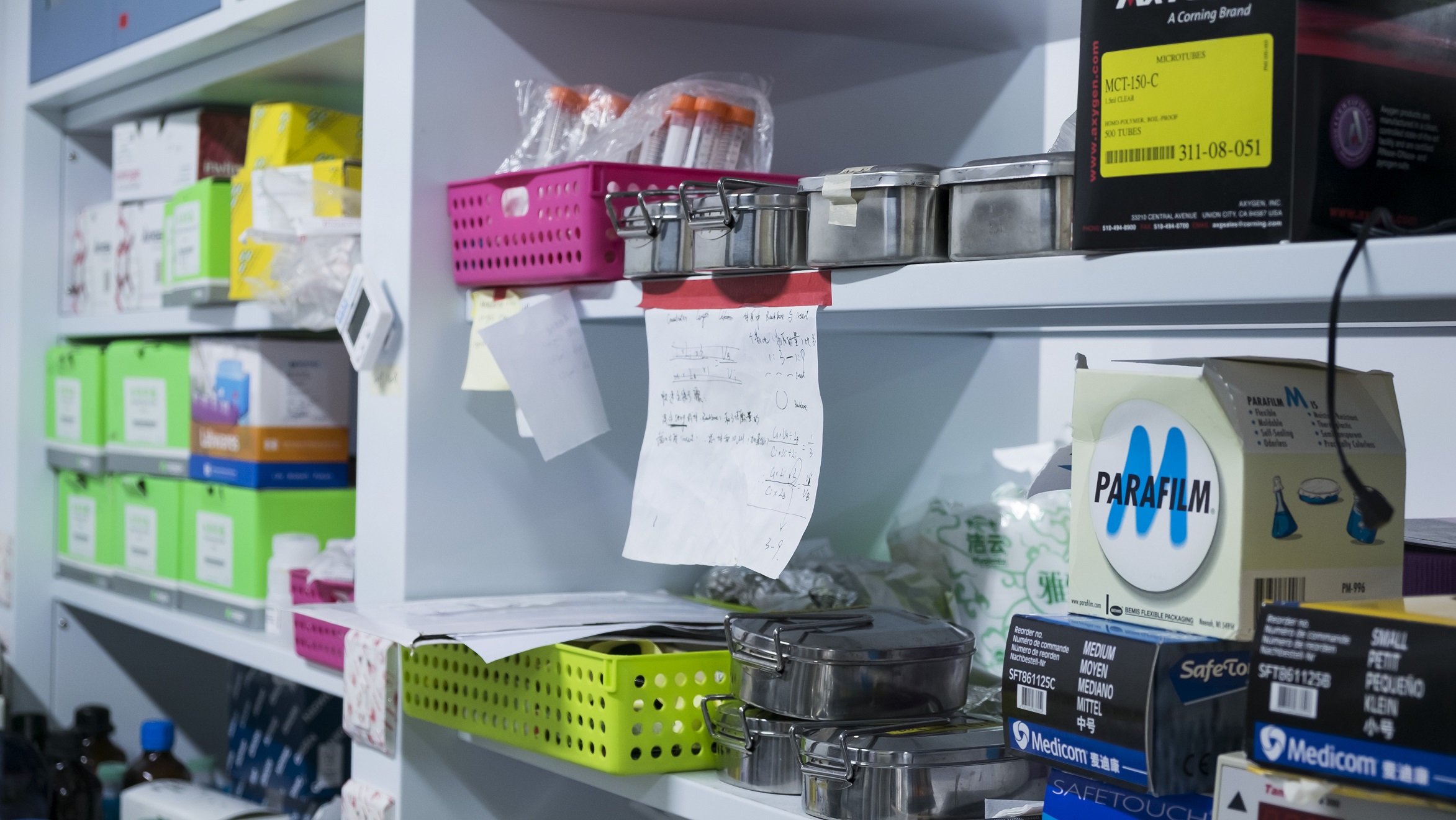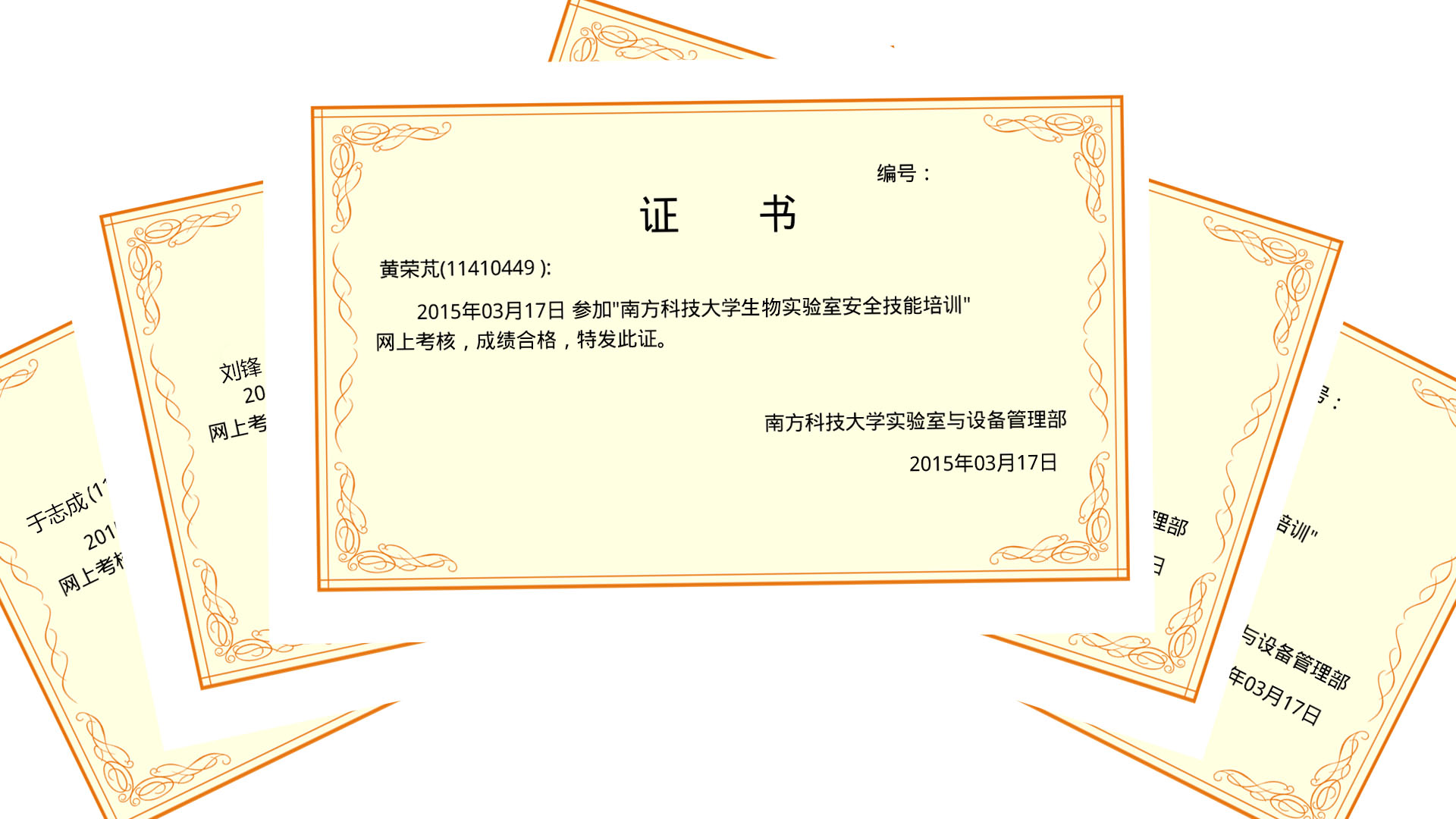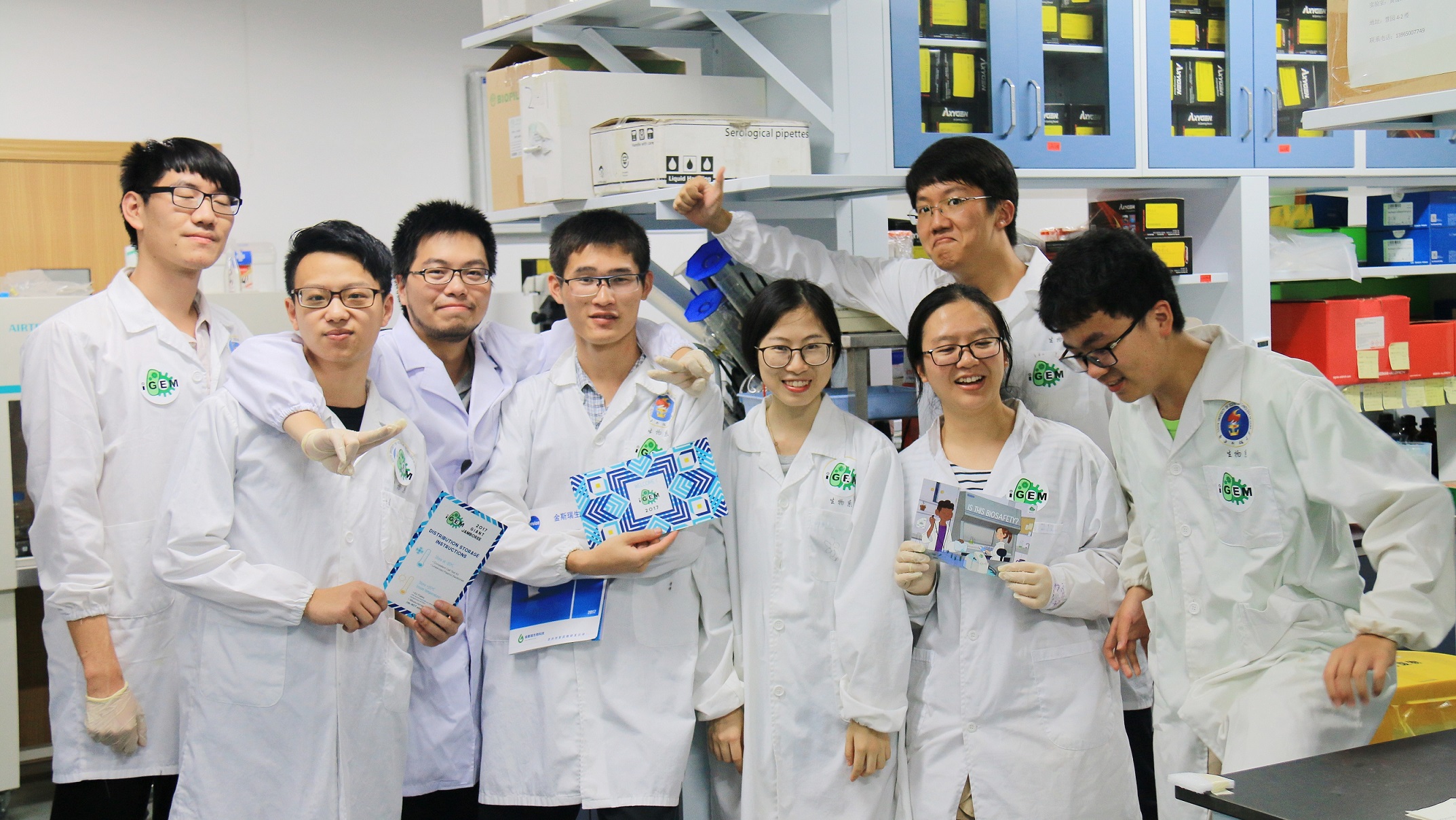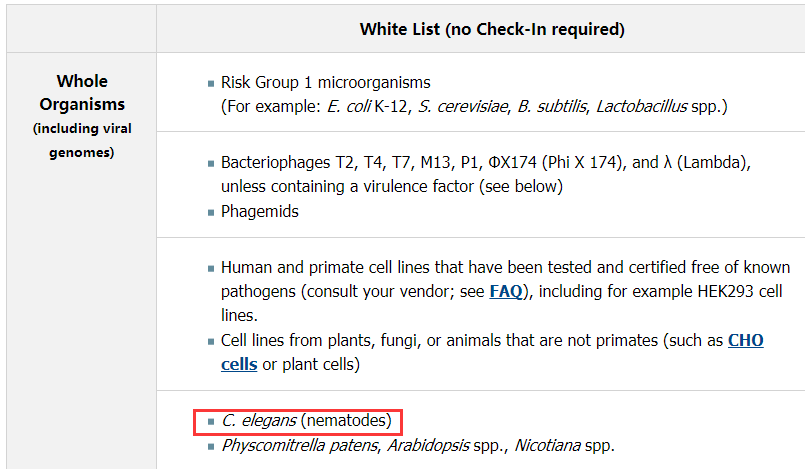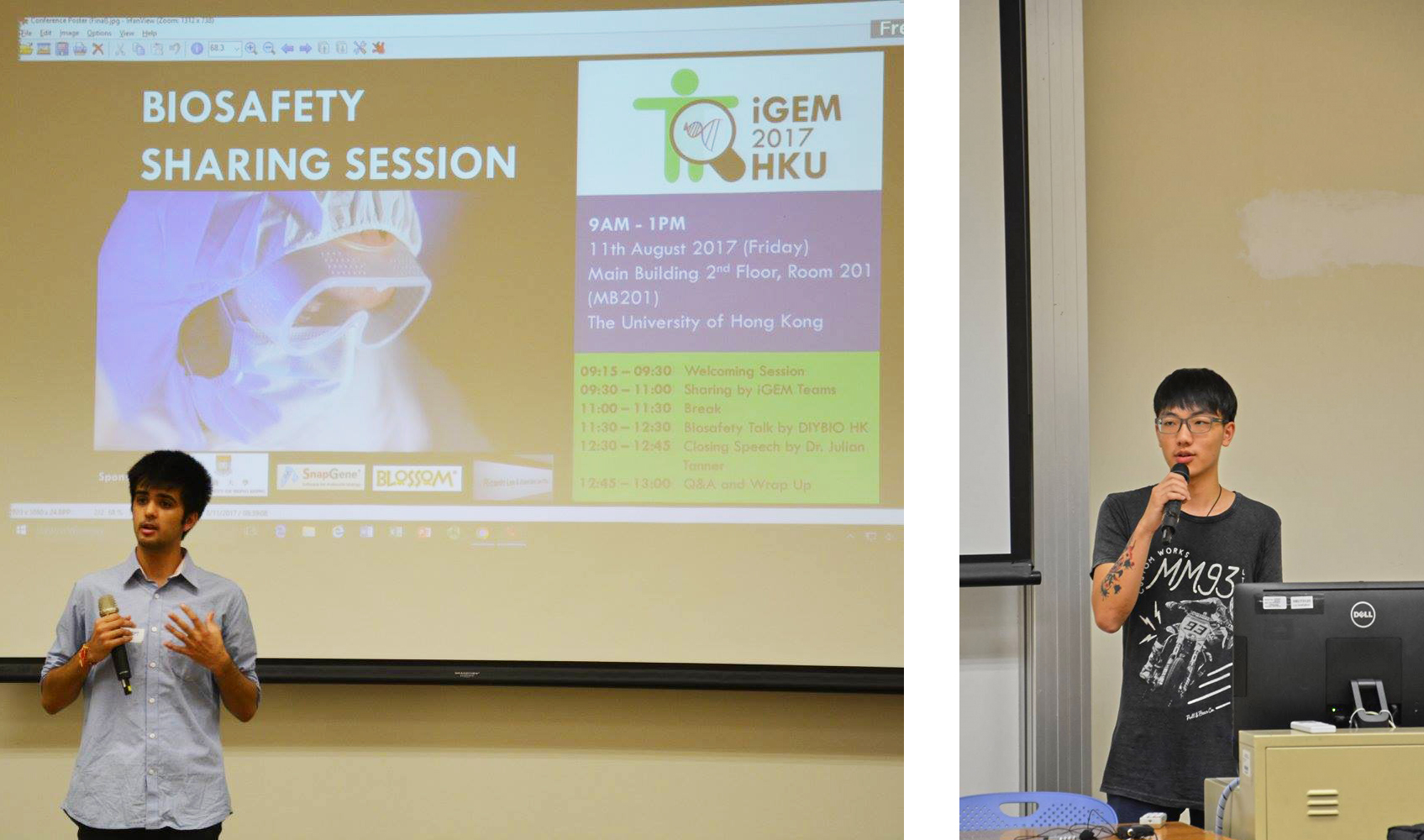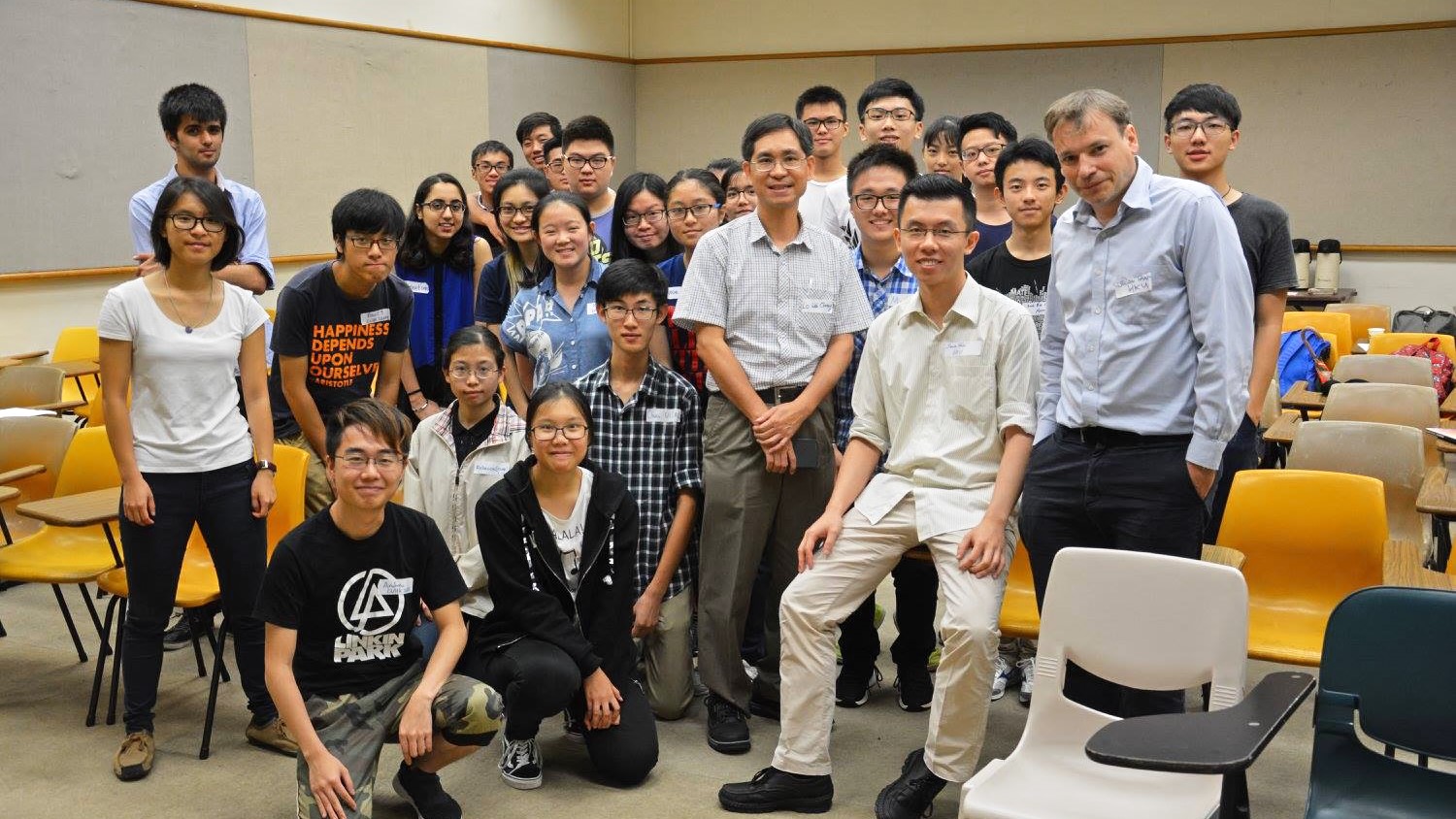Safety
Safety is utmost
Contents
Individual safety
Everyone involved in our experiment has passed the biosafety assessment of biological laboratory. Besides, during our experiments, we strictly obey safety operation rules.
1) Hands must be washed before leaving the lab area. And lab coats must be worn when working with bacterial cultures.
2) No foods or drinks are allowed in the lab.
3) All bench spaces are wiped with 75% ethanol before and after using.
Equipments safety
The safety of our experimental equipments is guaranteed by legal company’s security certificate. All instruments that have been exposed to the source of suspected infections must be sterilized after experiments. Different instruments are all placed in their suitable places. For example, the sharp instrument must be collected in a special tool box. Besides, solid and liquid wastes are treated separately.
Procedure safety
During our experiment process, we strictly obey the protocol of every experiment. For example, we follow the miniMos protocol to prepare our injection plasmids system, microinject worms and select genetic stable worms.
Organisms safety
1) Caenorhabditis elegans
Our project choose C.elegans as the model organism. C.elegans is a harmless organism which is on the iGEM white list. It is very safe to use C.elegans to do researches and scientists have utilized C.elegans in molecular biology and developmental biology researches since 1965.
2) Bacteria
E.coli is a naturally derived organism from humans and we used the strain DH5alpha to express our parts. These strains are so called “lab strains” and cannot survive in the human digestive system. They are also not able to produce toxins. Therefore, E.coli are classified as the lowest risk organisms in biosafety.
Environment safety
After we finish our experiment, we properly dispose our experiment materials. We use alcohol to sterilize all tools that have been exposed to source of contamination. When we discard C.elegans plates, we do bleaching to the worm with alkaline hypochlorite solution so that we can avoid any gene pollution. Besides, those C.elegans plates are treated specially with a separate Bio-medical waste bin.

